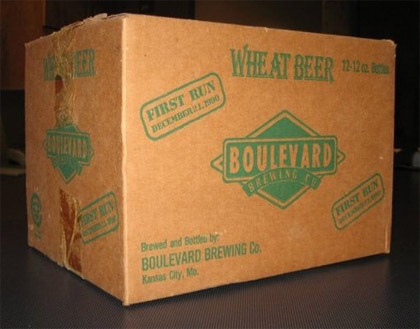I wish that I had a link you could click on so you could listen to Greg Noonan talking about starting a brewery in the 1980s.
Tom Bedell’s tweet on Sunday was a gut punch: “Bad news–don’t know the details yet, but Greg Noonan, pioneering founder of the Vermont Pub and Brewery in Burlington has passed away.”
I last talked to Noonan in January. I had only one question really, but after he answered that in detail and elaborated on the elaborations the conversation wandered still more. We talked about the Beer Oral History project and I confessed I was not collecting histories at nearly the rate I had planned when we began our family trip. “You’ll have to come up,” he said. “And you really should go over and talk to Dave Geary and then to Peter Egleston and . . . you’re going to be here a while.”
I still need to go, but there’s nobody I was looking forward to talking to me than Noonan. He was never afraid to say what he thought. I quoted this before. It comes from a column Fred Eckhardt wrote for All About Beer magazine in which he went looking for the meaning of “craft beer.” Perhaps his best answer was from Noonan:
“I wish that Vince Cottone had trademarked the term. (He would be) a good arbiter of what is and what isn’t ‘hand-made.’ (He would reject) beers made in ‘micro-industrial’ quarter-million barrel breweries and ‘fruit beers’ made with 0.003 percent fruit-flavored extract. (If Congress were to legislate an appellation, the licensing board should include) Cottone, Carol Stoudt, Randy Reede and Teri Fahrendorf (to ensure) its integrity. Craft brewed (should) mean pure, natural beer brewed in a non-automated brewery of less than 50-barrel brew length, using traditional methods and premium, whole, natural ingredients, and no flavor-lessening adjuncts or extracts, additives or preservatives.”
When we spoke in January I asked him if he felt the same. “Funny, I was just talking with some other brewers about this. We decided the sweet spot is about 30 barrels,” he said.
Sometimes words spoken can come across a little harsh in black and white. In 1998 we talked for a story about brewpubs celebrating their tenth anniversaries.
“I wanted to brew beer, and I thought, ‘I’m going to do it.’ You had a lot of people who had real passion for beer,” he said. “The love of beer was probably higher in that (1980s) group. That community of brewers pre-1990 was pretty tight . . . There was a lot more back-and-forth then.”
Today’s brewers might take offense, but recall that in 1998 money changers were at the door. There was beer love to be found, but you never knew who you might trip over to get to it.
In 2006 I saw him at the Great American Beer Festival, his first visit after many years. An Albuquerque brewer, Ted Rice, alerted me he was in the building. When he recognized him Rice insisted he try all the Chama River beers and told Noonan how important Brewing Lager Beer was to him.
There are big events, be it the Great American Beer or the New Orleans Jazz & Heritage Festival, where you never find somebody you are looking for but then run into other people seemingly ever half an hour. That’s the way it was in 2006. I kept seeing Noonan. He’d recommend a beer. I’d suggest a booth he should visit. Sometimes he’d already have been there and would comment, usually telling me something about a beer I should have noticed myself.
He was always smiling. “Try that kolsch,” he said. “But don’t go near their blueberry beer. Still, you got to love their passion.”
He did. I sure thought I was going to see him back at GABF. I won’t, and I won’t be collecting his oral history. I can’t give you that recording, but here are a few of his words from that 1998 story:
“When the homebrewers stop entering the profession, and the backyard breweries are squeezed out, then it will become stagnant. You gotta keep getting the guys who say, ‘Cool, I can sell the beer I make. I can do it.’ ”
